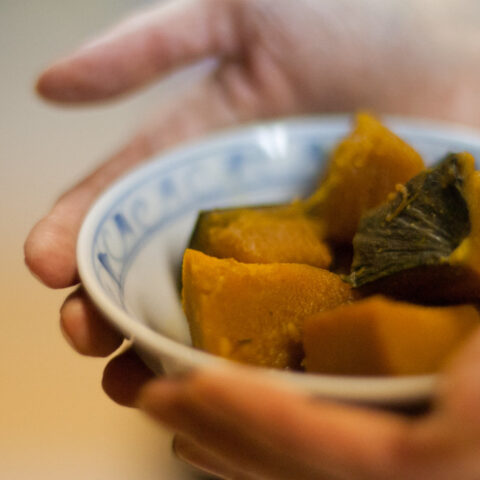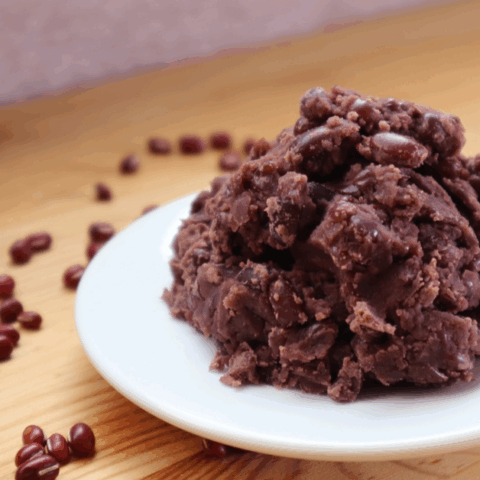
For many, Autumn would be considered an ideal season. After all, it doesn’t get as cold and chilly as it does during winter, and all the heat from summer has finally begun to ease. Those who have traveled to Japan during July-August must know what I am talking about, as the humid weather of these months is quickly becoming a thing of the past! Above all, Fall is THE season to witness the artistic creativity of Mother Nature, as she paints lovely leaves in a myriad of warm colors, ranging from yellow to red, with tints of orange in between. But, these are not the only reasons those who get the chance to travel to Japan in autumn should consider themselves lucky. Indeed, this beautiful country, during the months of fall, does not only offer you ravishing scenery but also a plethora of seafood specifically meant to be eaten during this season. Mouth-watering food and beautiful landscapes, what more could one ask for?

Salmon sushi – Photo Credit: Pixabay
Let’s Start With Shake (Salmon)
Just like tuna, salmon is considered one of the fundamentals when it comes to seafood. Many of us begin our journey of discovering onigiri and sushi thanks to this luscious fish. Well, did you know that although Shake, as it’s known in Japanese, can be caught all year long, the ones that are caught between September and February are considered to be the most delightful ones? Indeed, during the fall, salmon travel to the ocean to feed before heading back to the river to spawn. Thus, making them rich with fat and nutrients. Out of all Shake species, Akijake (chum salmon) in particular is quite appreciated and popular with the locals because of its firm texture and extra fattiness.
You can eat it in a multitude of ways: sashimi (raw), sushi, or even on top of rice, Shake-don style. If you don’t like raw fish, you can try the cooked version, where oftentimes it will either be marinated with shiokoji (salted koji) or saikyo miso (sweet white miso). When prepared in this manner you can find it grilled or even foil-baked. Truly, a fish that can be enjoyed by all.

Ikura Gunkan Maki – Photo Credit: blackieshoot
Following Mama Shake, Baby Sujiko and Ikura
Sujiko and Ikura are the names given to salmon eggs. The former consists of the eggs that are still intact in their casing, while the latter corresponds to the eggs that have been extracted, rinsed, and salted. Both are called the “Jewels of the Sea” because of their pearl-like shape and crimson color, similar to a ruby. While raw Ikura has a more subtle taste, with a hint of sweetness, Sujiko is much stronger in flavor. They can be eaten in the form of sushi, for instance, as a Gunkan Maki (Ikura) or a Nigiri (Sujiko), but also as a Temaki.

Sanma fish (Pacific saury) – Photo Credit: Consulate General of Japan in Atlanta
Let’s Samba Like the Sanma
Sanma is THE fish to represent the arrival of the fall season. Even the kanji (秋刀魚) behind its name bears the meaning of “Autumn(秋) Sword (刀) Fish (魚)”. Sword, because of its elongated, silver-colored body, and Autumn, because it becomes available only in this season. Sanma is sweet and fatty and has a lot of benefits: rich in Omega-3, a good source of proteins, and a lot of vitamins, and that’s just to say the least. No wonder, Japan has the following saying: “Sanma ga deru to anma ga hikkomu”, which translates to “when the swordfish appears, the massager withdraws.” Thus, highlighting its nutritional value.
It can be enjoyed in quite a few ways: Sashimi, Sushi, Teriyaki (glazed in soy sauce, mirin, and sugar), Nitsuke (simmering in soy sauce), or even Shioyaki-style (grilled and seasoned with salt). Grilled Sanma pairs well with freshly made rice, some soy sauce, and Oroshi Daikon (grated Japanese radish). So, if you’re in Japan this Autumn, make sure you grab a bowl!

Red Sea Bream sashimi – Photo Credit: Teresa Design Room
Deru, Deru Momijidai
Like the revival of a song from the anime Fruits Basket, Sakuradai (Cherry Sea Bream) our beloved spring fish makes a grand return as the Momijidai (Autumn Leaves Bream)! Same fish, just caught in a different season with a different taste and color! That’s the beauty of the majestic fish known as the King of Fish. Momijidai, compared to its spring counterpart, is darker in color, but with a softer texture. During fall, the fish are regaining energy after having spawned during spring, and are getting ready for winter. Therefore, their diet differs, hence, altering their taste. You can enjoy Momijidai in a Nitsuke-style dish or grilled, in a Shioyaki style.

Ise Ebi in an assortment of dishes – Photo Credit: Travel Mie Japan
Ise Ebi
Let’s diversify our palette with some delicious Ise Ebi (Japanese Spiny Lobster). This lobster is a specialty that comes from the Shima Peninsula, in the southern part of Mie Prefecture. Its name “Ise Ebi” also seems to derive from Mie Prefecture’s former name: “Ise”. It is considered a luxurious food item because of its rich and tender meat, and its peak season is said to be between October and January. You can enjoy Ise Ebi in various forms, ranging from sashimi to tempura, grilled on a Teppan, or even steamed with Sake (rice wine). The way to savor Ise Ebi is as diverse as the lovely scenery that Mie Prefecture offers.

Matsuba Crab – Photo Credit: Discover another Japan San’in
Red Snow Crab (Beni-zuwaigani)
Let’s continue our journey by traveling to the beautiful region of San’in. Tottori Prefecture is not only home to the magnificent and one-of-a-kind Tottori sand dunes, but it also provides you with delicious, decadent, and succulent crab meat. Indeed, this area reigns supreme when it comes to the matter of crabs. Out of all the different types of this shellfish, Matsuba crab, aka the male red snow crab; Beni-zuwaigani, the red snow crab, also nicknamed “the taste of autumn”; and Itsukiboshi (the rarest type of Matsuba), are all sought after during the fall season for their rich meat, tinted with sweetness and umami flavor. The peak season for Matsuba is said to be from early November to early March, while the fishing period for Beni-zuwaigani, on the other hand, is said to start from the 1st of September and last until the 30th of June. You can enjoy it in a myriad of ways, from boiled to stewed, in a sukiyaki, or grilled, and even in its rawest form, as a sashimi.

Mosaebi – Photo Credit: Discover another Japan San’in
Mosaebi
Let’s remain in Tottori to uncover the sweet delicacy known as Mosaebi. Mosaebi is a shrimp (ebi means shrimp/prawn) that is caught between September and May, and is often overshadowed by the more widely known Red Snow Crab. The reality is that these shrimp are often caught by trawling, a practice more commonly used when fishing for crabs. The uniqueness of the Mosaebi resides in the fact that this particular shrimp can’t maintain its freshness for too long, thus rendering export outside the region difficult. Therefore, this gives you another reason to travel to the mesmerizing Tottori Prefecture within the months of autumn to try this locally exquisite sweet shrimp.
There are various ways to eat it. In the form of sashimi, its meat is firmer and sweeter than that of the Alaskan pink shrimp. Besides sashimi, it is also savored in the form of Nitsuke (simmered in soy sauce), as part of the Miso soup with Wakame seaweed and tofu, grilled and seasoned with salt, Shioyaki-style, or even as a tempura. But, most importantly, please try the Mosaebi Senbei, a specialty of the region that consists of a rice cracker made with Mosa shrimp. It is a hot seller loved by both tourists and locals alike.

Nodoguro – Photo Credit: Discover another Japan San’in
Nodoguro and Shijimi
After Tottori, it is now time to visit the breathtaking Shimane Prefecture. Nodoguro, also known as blackthroat seaperch, is reputed to be a very luxurious fish, primarily due to its rarity. Its spawning areas are quite limited, and its natural habitat is narrow, rendering it difficult to catch. It is said that the Nodoguro caught in the Hamada area is known all over Japan, for its delicious taste and its rich fattiness. Nodoguro can be enjoyed in various creative forms, ranging from Sashimi to Sushi, boiled or even grilled.
As for the Shijimi clams, their largest annual catch happens in Lake Shinji, in the northeast area of the Shimane Prefecture. The clams are usually bigger in size than other types with very fleshy meat. One of the local specialties consists of the Shijimi Miso soup, a traditional dish that embraces the tenderness of the clam’s meat with the richness of the Miso broth.

Shijimi – Photo Credit: Discover another Japan San’in
Indeed, Fall is the ideal season, whether for how versatile autumn is with its beautiful leaves or for the plethora of diverse dishes that it offers. Fall is magnificent. And lucky are those who get to spend it in Japan! With its beautiful selection of seafood, harboring both delightful tastes, and interesting background stories, you are sure to find your perfect match. But believe us when we say that the above list is not exhaustive. Whenever you get the chance, please also try Saba, Iwashi, Shishamo, Shirasu, and Nishin fish! As diverse as the colors of the leaves of Autumn are, so is its seafood. Each represents the arrival of the Fall in its own way and pleads you to try their delectable, mouth-watering, tender meat. Fall is coming, so what are you waiting for?
Featured Photo Credit: Jose Ruales
Ready to get your hands on some of this delicious seafood? Tag along on this amazing food tour in the famous Tsukiji Fish Market.
PIN THIS FOR LATER




